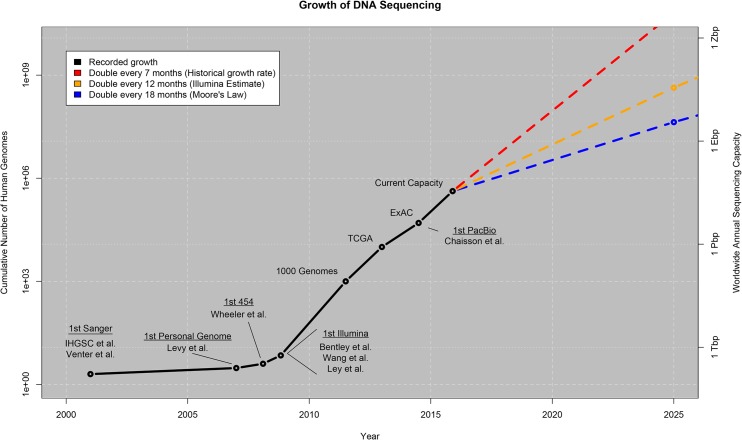Fig 1. Growth of DNA sequencing.
The plot shows the growth of DNA sequencing both in the total number of human genomes sequenced (left axis) as well as the worldwide annual sequencing capacity (right axis: Tera-basepairs (Tbp), Peta-basepairs (Pbp), Exa-basepairs (Ebp), Zetta-basepairs (Zbps)). The values through 2015 are based on the historical publication record, with selected milestones in sequencing (first Sanger through first PacBio human genome published) as well as three exemplar projects using large-scale sequencing: the 1000 Genomes Project, aggregating hundreds of human genomes by 2012 [3]; The Cancer Genome Atlas (TCGA), aggregating over several thousand tumor/normal genome pairs [4]; and the Exome Aggregation Consortium (ExAC), aggregating over 60,000 human exomes [5]. Many of the genomes sequenced to date have been whole exome rather than whole genome, but we expect the ratio to be increasingly favored towards whole genome in the future. The values beyond 2015 represent our projection under three possible growth curves as described in the main text.

